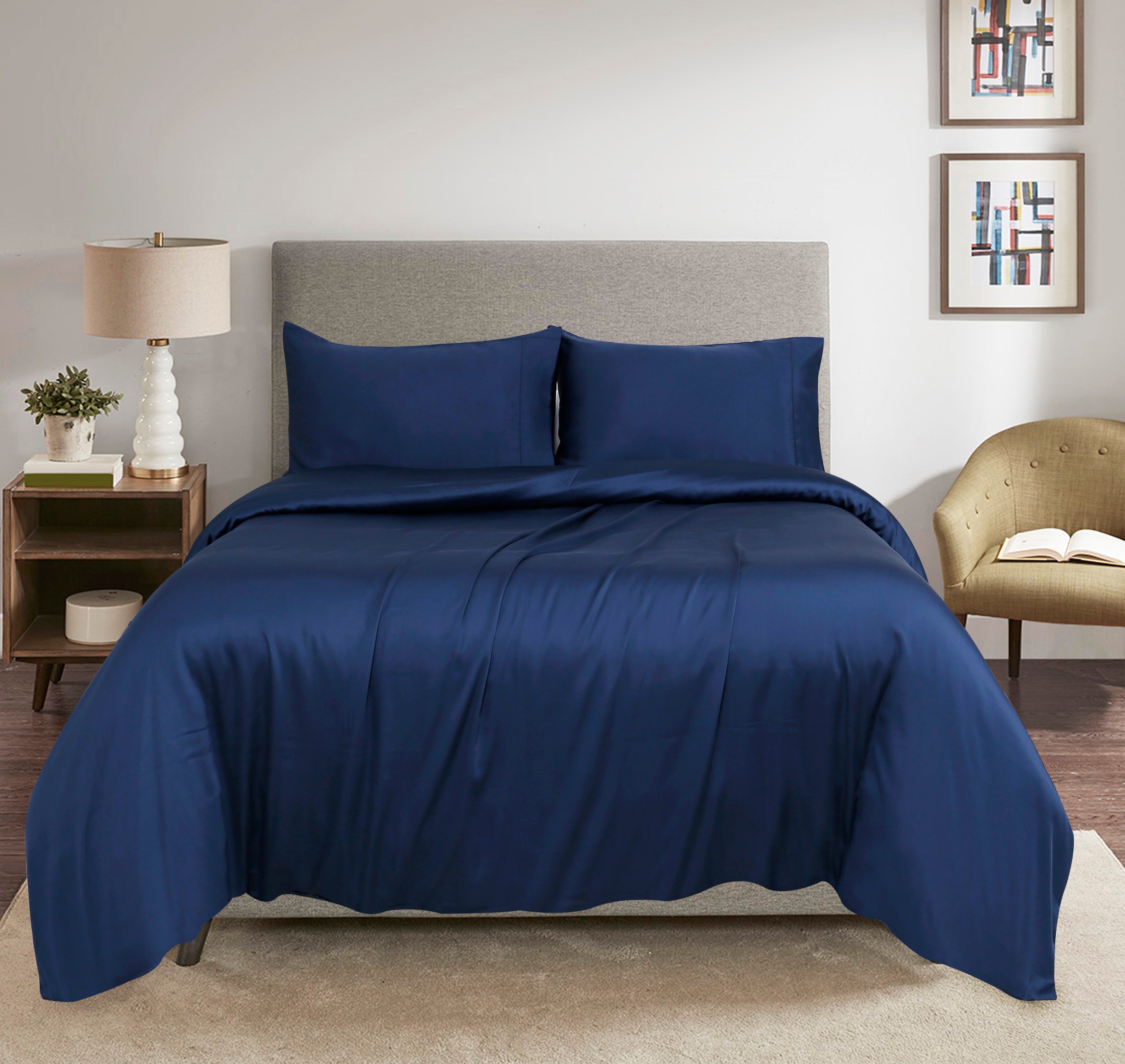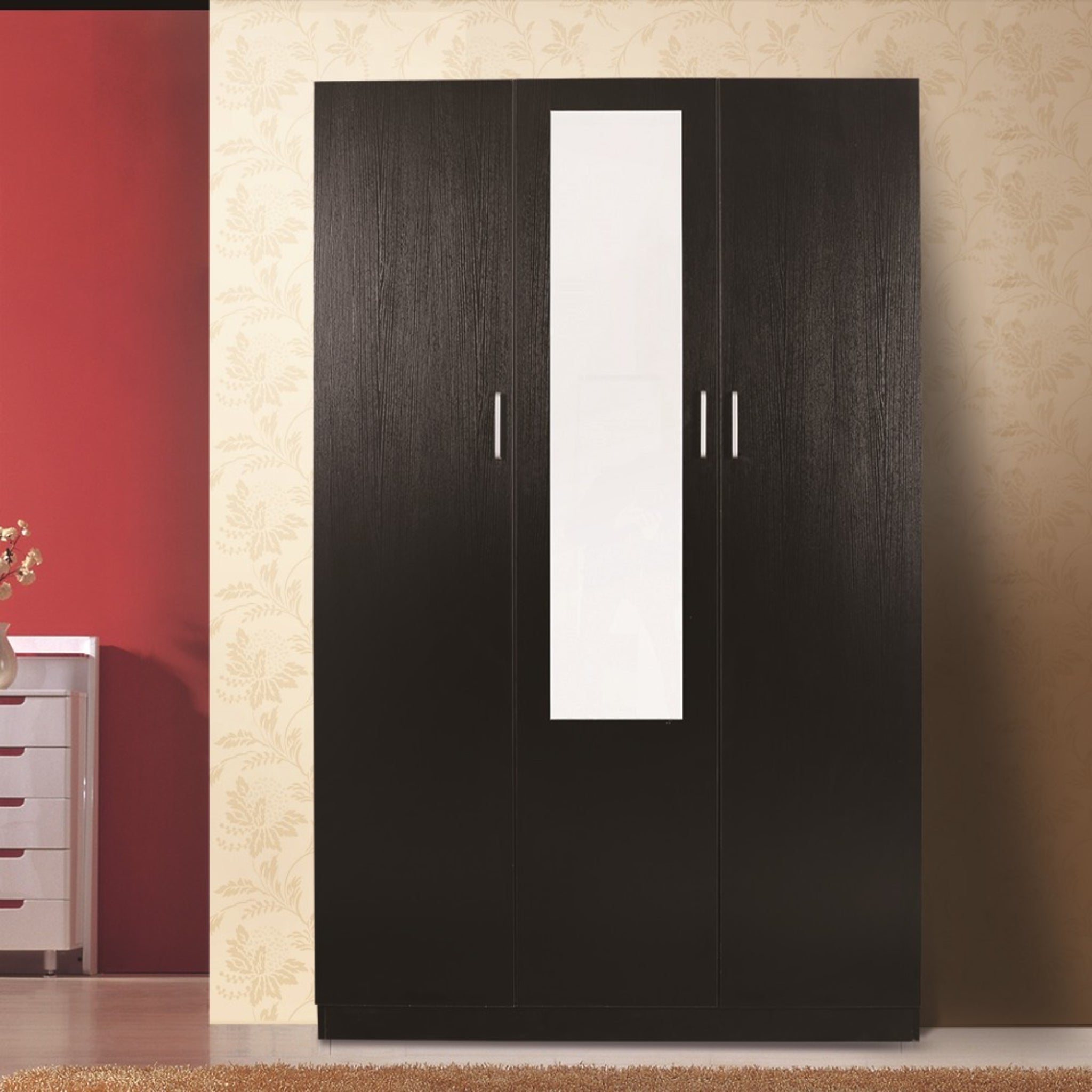Let's get straight to it. Most experts agree you should be changing your pillows every 1 to 2 years. This isn't just about chasing that new-pillow feeling; it's a vital part of keeping your sleeping environment healthy. Over time, your trusty pillow becomes a hotspot for dust mites, dead skin, and other allergens, which can really do a number on your sleep quality and health.
Your Quick Guide to Pillow Replacement

It’s easy to think of a pillow as just a soft place to rest your head, but it's much more than that. Think of it as a crucial piece of sleep equipment that needs regular maintenance. Night after night, it soaks up sweat, oils, and skin cells, creating a perfect breeding ground for things you’d rather not sleep with.
This is precisely why knowing how often you should change your pillows is so important. Here in Australia, the common wisdom is to swap out your standard pillows every 18 to 24 months to maintain good sleep hygiene. If you let it go for too long, you’re inviting mould and mildew, which can trigger allergies, create musty odours, and even affect your breathing.
Your pillow is working hard all night, every night, to support your neck and keep your spine aligned. It’s best to treat it as a consumable item—once it loses its supportive structure, it's time for it to go. This simple step can be the key to avoiding neck pain and getting a truly restorative sleep.
The biggest factor that determines how long your pillow will last is what it's made of. Some materials flatten out and lose their supportive qualities fairly quickly. Others, like the ones used in high-quality shredded gel memory foam pillows, are specifically engineered for better durability and hygiene.
To give you a better idea of where your pillow stands, we’ve put together a handy guide based on the most common materials.
Pillow Replacement Timelines by Material
This table provides a quick summary of the average lifespan for common pillow types available in Australia, helping you gauge when a replacement is due.
| Pillow Material | Recommended Replacement Frequency |
|---|---|
| Polyester/Fibre-fill | 6 months to 2 years |
| Memory Foam | 2 to 3 years |
| Down or Feather | 1 to 3 years |
| Latex | 3 to 4 years |
| Buckwheat | 3 to 5 years |
As you can see, materials like latex and buckwheat are the marathon runners of the pillow world, while a basic polyester one is more of a sprinter. Knowing what you're sleeping on is the first step to knowing when it's time for an upgrade.
The Unseen Consequences of an Old Pillow

While a pillow that’s gone flat and lumpy is an obvious problem, the most troubling issues are the ones you can't see. It helps to think of your pillow like a giant sponge. Night after night, it soaks up everything it comes into contact with: sweat, body oils, saliva, and dead skin cells. This cocktail creates a warm, moist environment—basically a five-star resort for microscopic life.
This is where the real trouble begins. Dust mites, tiny creatures that feast on dead skin flakes, absolutely thrive in old bedding. It's not the mites themselves but their waste that is a powerful allergen for so many people, directly leading to those frustrating morning sniffles, itchy eyes, and nagging congestion.
Believe it or not, an old pillow can be home to millions of dust mites. A horrifying portion of its weight can actually be made up of dead skin, dust mites, and their droppings. Your personal comfort item essentially becomes a major source of allergens.
Beyond the mites, this environment is also a perfect breeding ground for mould and bacteria. This isn't just a gross thought; it can have real impacts on your health, particularly if you have sensitive skin or a respiratory condition like asthma.
From Your Pillow to Your Health
The link between your old pillow and those persistent health niggles is stronger than you might think. Being exposed to that cocktail of allergens and microbes all night can easily trigger or worsen a whole host of problems. For many people, understanding how often you should change your pillows becomes a top health priority once they make this connection.
- Worsening Allergies and Asthma: Do you regularly wake up with a stuffy nose, a bout of sneezing, or watery eyes? Your pillow is a very likely culprit. For anyone with asthma, these allergens can be a serious trigger for nighttime flare-ups and breathing difficulties.
- Skin Irritation and Acne: All the oils, bacteria, and general grime that accumulate in your pillow can easily transfer to your face while you sleep. This can clog your pores and lead to breakouts, turning what should be a restful night into a source of skin stress.
Getting a new pillow isn't just about fluffy comfort—it's about getting rid of a major source of irritants from right under your nose. Choosing fresh, clean pillows is a simple but powerful investment in healthier skin and clearer breathing, night after night.
Key Signs Your Pillow Needs Replacing
While the one-to-two-year rule is a handy benchmark, your pillow will often give you some pretty clear hints that its time is up. Instead of just marking a date on the calendar, it’s much better to learn how to spot the tell-tale signs for yourself.
A classic trick for polyester, down, or fibre-filled pillows is the simple fold test. Just fold your pillow in half, squeeze the air out, and hold it like that for about 30 seconds. When you let go, a pillow with any life left in it should immediately spring back to its original shape. If it just lies there, sad and folded, its internal structure has given up the ghost.
Memory foam is a different beast. For these pillows, you’ll want to look for a permanent impression where your head usually rests. If the foam doesn’t fully bounce back and you can see a lasting head-shaped crater, it's no longer giving you the support it was designed for.
Beyond these quick physical checks, your own senses are your most reliable tool. Trust what you see, feel, and even smell. If your pillow is showing any of the signs below, it’s screaming for a replacement.
A Quick Diagnostic Checklist
Not sure if your pillow is past its prime? Go through this quick list. If you find yourself nodding along to more than one or two, it’s definitely time to start shopping for new pillows.
-
Noticeable Lumps and Bumps: Run your hands over your pillow. If the filling has become clumpy, lumpy, and uneven, it can’t cradle your head and neck with the consistent support you need for a good night’s sleep.
-
It’s Gone Flat: Does your pillow look deflated and lifeless? A pillow that’s as flat as a pancake has lost its loft, and with it, its ability to keep your head and spine properly aligned.
-
Waking Up with Aches: If a stiff neck or sore shoulders are your new normal in the morning, your pillow is a prime suspect. Proper support is non-negotiable, and when your pillow fails, your body is the first to know. Keep in mind that a good mattress is also crucial; if your bed has seen better days, pairing a new pillow with a comfortable firm queen mattress could be the solution.
-
Persistent Stains or Odours: Those yellow sweat stains or a funky, musty smell that just won't wash out are bad news. They’re signs that bacteria, mould, and allergens have set up camp deep inside the filling, and no amount of washing is going to fix that.
How Long Do Pillows Last? A Guide by Material
Ever wonder why some pillows feel flat after just a few months while others seem to last for years? It all comes down to what’s inside. The material a pillow is made from is the biggest clue to how long it will keep your head and neck properly supported.
Think about it this way: a pillow's job is to resist nightly pressure, moisture from your body, and general wear and tear. Some materials are simply better at this than others. For example, budget-friendly polyester pillows have fibres that tend to clump and flatten out pretty quickly. On the flip side, something like natural latex is incredibly resilient and can spring back into shape for years.
This image breaks down the key things that determine how long you can expect your pillow to provide a good night's sleep.

As you can see, a pillow's lifespan isn't just about its material. How you use it and care for it plays a huge part in its longevity, too.
A Closer Look at Common Pillow Materials
Let's dive into the most common pillow types you'll find in Australia. Knowing the differences will help you understand how often you should change your pillows based on what you own or plan to buy.
- Polyester Pillows: These are the most common and affordable, but they have the shortest life. Expect to replace them every 6 months to 2 years. Their synthetic fibres compress easily, leaving you with lumps and flat spots that don’t support your neck.
- Down and Feather Pillows: If you look after them well, these luxurious pillows can last from 1 to 3 years. While they feel wonderfully soft, the natural filling can absorb body oils and moisture over time, causing it to lose its fluffiness and support.
- Memory Foam Pillows: A solid choice that should last you 2 to 3 years. Memory foam is fantastic for contouring to your head and neck. However, after years of use, the foam can lose its memory and stop bouncing back, leaving a permanent head-shaped dip. For the ultimate sleep setup, a great pillow needs a great mattress, like our Ariel Pillow Top Gel Memory Foam Queen Mattress.
- Latex Pillows: These are the clear winners for durability, often lasting 3 to 4 years or more. Natural latex is incredibly resilient and breathable. It's also naturally resistant to nasties like dust mites and mould, making it a fantastic long-term investment for your health.
According to sleep experts in Australia, when a pillow flattens with age, it loses the structural support your neck desperately needs. This can be a direct cause of neck pain and stiffness. Making the switch to a fresh, ergonomic pillow can dramatically improve your spinal alignment and has been shown to reduce neck pain by as much as 35%. You can explore more on how different materials affect your sleep in this helpful guide on upgrading your pillow.
How to Properly Care for Your Pillow

While every pillow eventually hits its expiry date, a bit of care can make a world of difference in its lifespan and freshness. Think of it as your first line of defence against premature wear and tear, helping you get the best value and comfort out of your purchase.
Your pillow works hard every night, so it needs a little upkeep to perform at its best. A few simple, consistent habits are all it takes to maintain its supportive structure and keep it hygienic.
The single most effective tool in your pillow care kit is a high-quality pillow protector. This simple addition acts as a barrier, shielding your pillow from moisture, sweat, skin oils, and allergens that would otherwise soak into the filling. It’s far easier to toss a protector in the wash every week than it is to deep clean an entire pillow.
Simple Habits for a Healthier Pillow
Beyond using a protector, a few other easy steps can make a huge difference. These quick habits help maintain your pillow’s shape and keep nasty microbes from setting up camp.
- Regular Fluffing: Get into the habit of fluffing your pillow each morning. It only takes a minute, but it redistributes the filling, brings back its loft, and stops it from getting lumpy and compacted over time.
- Airing It Out: Once a month or so, take your pillow out of its case and let it breathe for a few hours. Find a dry, well-ventilated spot away from direct sunlight. This helps any trapped moisture and odours to dissipate, making it a much less friendly place for bacteria.
Washing Your Pillows Correctly
Before you even think about washing a pillow, always check the care label—not all of them can go in the machine. If yours is machine-washable, aim to wash it every four to six months. Use a gentle cycle with a small amount of mild detergent, and it’s a good idea to wash two at once to keep the machine balanced.
For pillows that are spot-clean only, like most memory foam varieties, just use a damp cloth and a mild soap solution to gently treat any stains.
When you combine these cleaning habits with a quality protector and fresh, breathable bedding, like a Tencel Lyocell fibre fitted sheet, you’re creating a much healthier sleep environment. If you've been wondering how often you should change your pillows, taking these steps is the key to helping yours reach the upper end of its expected lifespan.
Common Questions About Pillow Replacement
Even with all the facts in front of you, deciding when to finally toss out an old pillow can still feel a bit fuzzy. To help clear up any last-minute doubts, let's tackle some of the most common questions we hear about pillow replacement.
Think of this as a quick-fire round to help you confidently decide if it’s time for an upgrade.
Do Expensive Pillows Last Longer?
Not always. It's a common assumption that a higher price tag equals a longer lifespan, but that’s not the whole story. What truly matters are the quality of the materials and the construction.
A well-made latex or high-density memory foam pillow will almost certainly outlast a cheap, flimsy polyester one. Durability is tied directly to the material itself, not just the price you pay at the checkout. Instead of focusing only on price, look at what the pillow is made of and how it’s put together. Sometimes a premium price is more about branding than a guarantee of a longer life.
Can I Just Wash My Old Pillow Instead of Replacing It?
Washing is fantastic for hygiene, but it’s not a fountain of youth for a worn-out pillow. A good clean can get rid of oils, sweat, and some allergens, but it can’t resurrect a pillow that has structurally given up.
If the filling has gone flat, become lumpy, or completely lost its ability to support your head and neck, no amount of washing is going to fix that. Just think back to the fold test—if it doesn't spring back, its supportive life is over.
Many Australians hold onto their pillows for far too long. While experts advise replacement every one to two years, research shows the average pillow in an Australian home sticks around for about seven years. Considering pillows have a use-by date, this gap means many of us are sleeping on pillows that are well past their prime, full of years of accumulated sweat and skin cells.
How Can I Protect My New Pillow?
The single best thing you can do for your new pillow is to use a high-quality pillow protector. Think of it as a barrier that shields your pillow from moisture, oils, and pesky dust mites. Using one from day one can seriously extend its hygienic lifespan.
This same logic applies to your entire bed. For a complete sleep hygiene setup, have a look at our guide on whether you should buy a mattress protector. By protecting both your pillows and mattress, you’re creating a much healthier sleep environment from the ground up.
Ready to finally get the deep, restorative sleep you deserve? At DLB Furniture, we offer a wide selection of high-quality Pillows designed to provide lasting comfort and support. Find the perfect match for your sleep style and start waking up refreshed.










